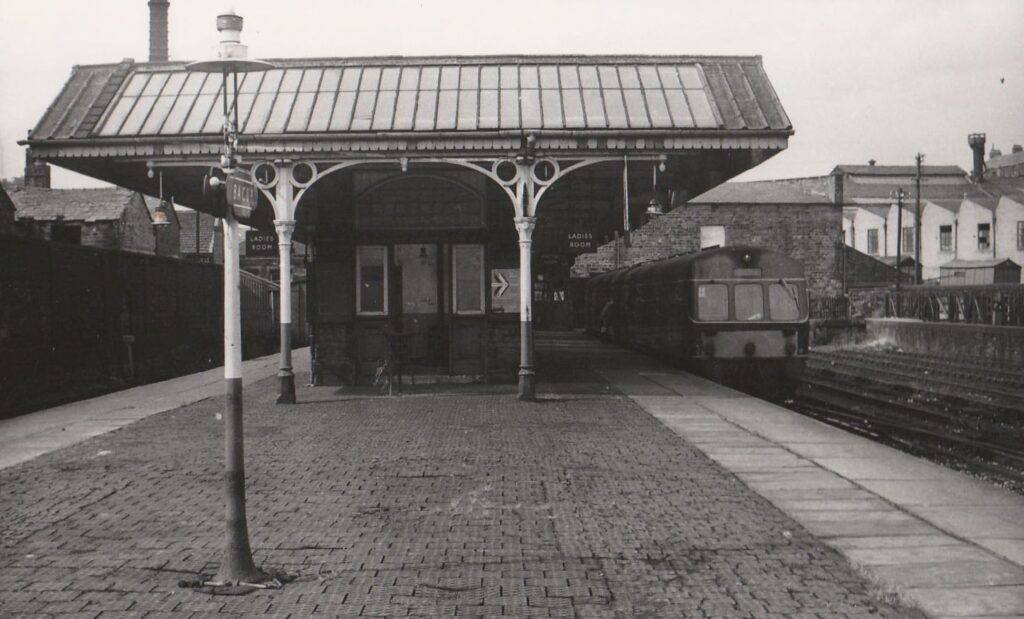Described as being “tucked up a winding valley on the fringe of the moors” Bacup was the end of the line when it came to the Bacup branch line, which opened to Bacup on the 1st October 1852. A month earlier, the local newspaper had announced “It is expected that the line of railway from Newchurch to Bacup will open shortly for traffic in a few days. Already the services of the greater portion of the navvies employed on the work have been dispensed with, and the inhabitants of the district do not regret the departure of these rough colonists, who in their occasional bacchanalian hilarity disturbed the peace and alarmed the quiet inhabitants of the district”. A fare of tuppence was charged on the day of opening which meant a great many people travelled along the line which was described as “a most romantic one”. It was recorded that four hundred persons travelled from Newchurch ( Waterfoot ) to Bacup and back two days later on Sunday 3rd October. Several months followed before goods trains began running through to Bacup, this taking place in February 1853.
By 1865, it had become apparent that the single line was just not enough. Commercial travellers complained that Bacup was just a terminus and that they could not continue on to other places such as Rochdale, Burnley or Todmorden from Bacup to continue their business without having to go back on themselves. They argued it was quicker to walk over the hills to get to these places and cheaper, as at this time the fare to Manchester was 1s 10d. Therefore, it was decided to add an additional line from Waterfoot to Bacup and to open another line from Bacup to Rochdale.
By March 1878, the company of Messrs Dransfield and Thompson had won the contract to install a second track from Waterfoot to Bacup which of course meant the need to excavate another tunnel at the Thrutch and at Stubbylee. The line opened in March 1880 with travel from Bacup to Bury taking approximately 32 to 34 minutes and a minute or two longer was added for journeys from Bury to Bacup to compensate for the gradients.
